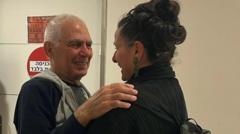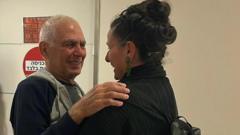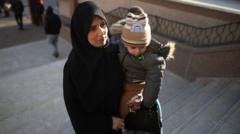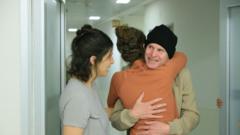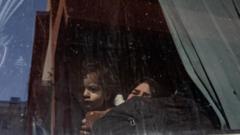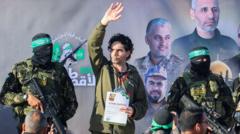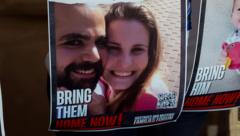In Palestine Square in Tehran, a series of vivid murals have emerged as a controversial method of signaling hostility towards Israel amid escalating tensions between the two nations. The murals, strategically displayed on a government-owned building, are inscribed with provocative messages in both Hebrew and Persian to ensure their impact resonates across language barriers.
Murals in Tehran Convey Stark Warnings to Israel Amid Tensions

Murals in Tehran Convey Stark Warnings to Israel Amid Tensions
As tensions escalate between Israel and Iran, murals in Tehran’s Palestine Square articulate stark messages against Israel.
One mural unveiled in January ominously warned, “Prepare your coffins,” while another in April featured a graphic of the Star of David inscribed with the message, “Die from this fear.” As the crisis has worsened, the murals have evolved, with the latest update showcasing a collage of hostages currently held by Hamas, a militant group which enjoys Iranian support, captioned, “None of the hostages will be released.”
Supervised by the Center for Islamic Propaganda, an institution under the watch of Supreme Leader Ayatollah Ali Khamenei, these murals have become a focal point for supporters of the Iranian government who frequently gather in Palestine Square during protests, wearing traditional checkered kaffiyehs and proudly waving the flags of Palestine and Hezbollah, a group allied with Iran. The square also features a tent for collecting aid donations directed at Palestinians and Lebanese.
Iran reported on establishing a digital clock in the same square back in 2021, counting down to what it claims will be Israel's destruction. The murals serve as an evolving canvas that mirrors both the changing political climate and the intensifying hostilities between Israel and Iran, encapsulating a moment in time where art becomes a potent medium for political expression and threat.
Supervised by the Center for Islamic Propaganda, an institution under the watch of Supreme Leader Ayatollah Ali Khamenei, these murals have become a focal point for supporters of the Iranian government who frequently gather in Palestine Square during protests, wearing traditional checkered kaffiyehs and proudly waving the flags of Palestine and Hezbollah, a group allied with Iran. The square also features a tent for collecting aid donations directed at Palestinians and Lebanese.
Iran reported on establishing a digital clock in the same square back in 2021, counting down to what it claims will be Israel's destruction. The murals serve as an evolving canvas that mirrors both the changing political climate and the intensifying hostilities between Israel and Iran, encapsulating a moment in time where art becomes a potent medium for political expression and threat.

